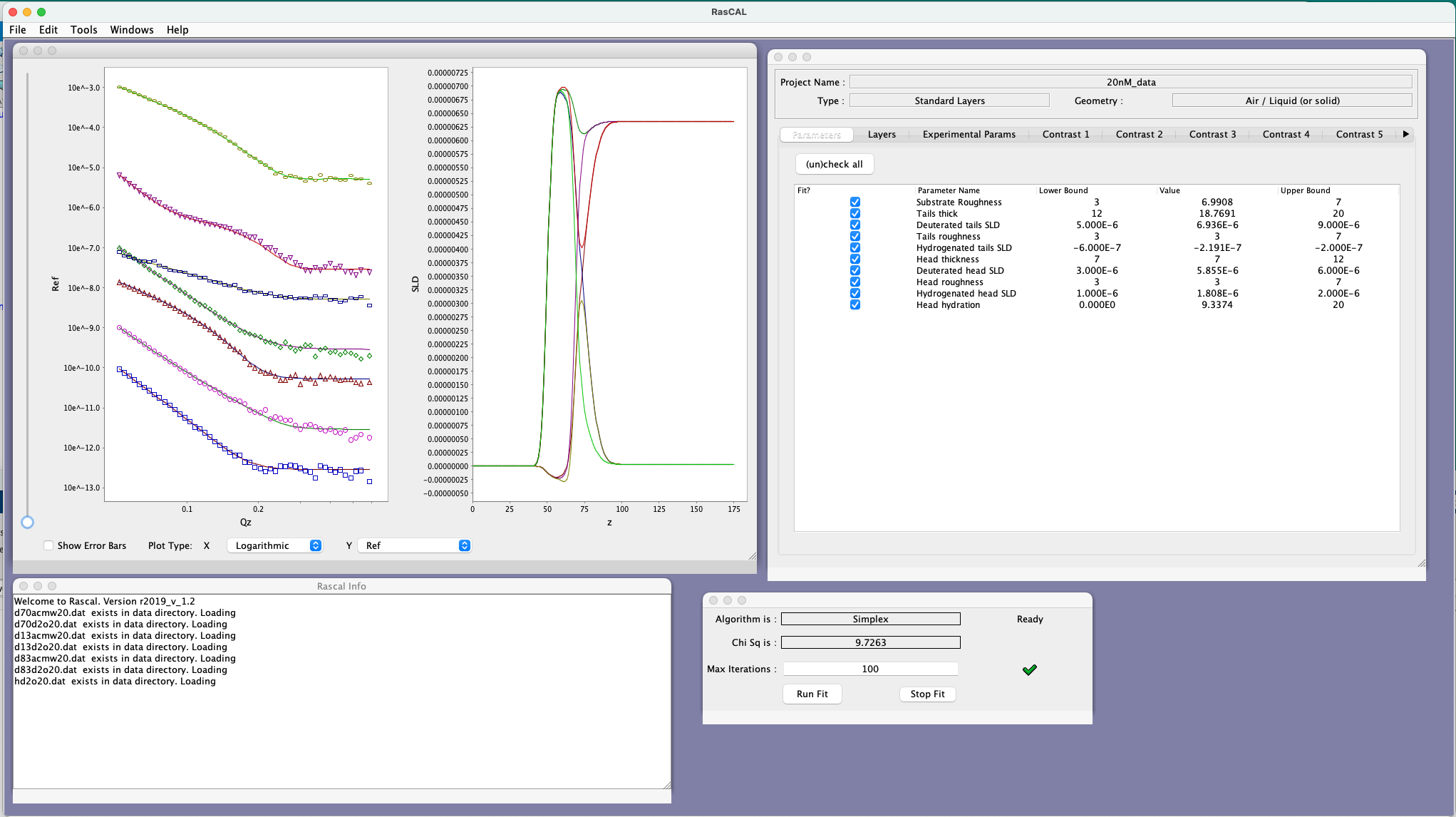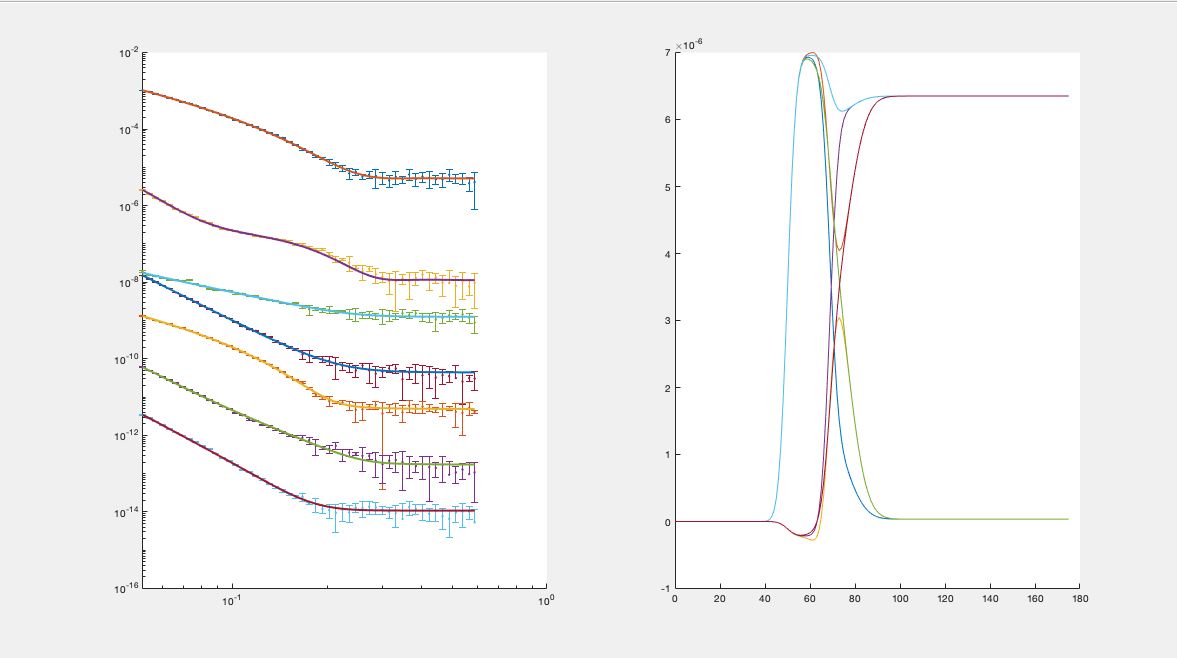Convert between RAT and RasCAL-1#
RAT is backwards-compatible with RasCAL-1; any RasCAL-1 project can be converted to a RAT project and analysed using RAT, and it is also possible to convert RAT projects back into RasCAL-1 projects (although you will lose any data from features of RAT which are not in RasCAL-1!)
Convert R1 to RAT#
As an example, we can use the ‘monolayer_8_contrasts’ demo example shipped with RasCAL-1:

To convert this, simply navigate to the project directory, and run the following:
problem = r1ToProjectClass('monolayer_8_contrasts.mat')
from ratapi.utils.convert import r1_to_project_class
problem = r1_to_project_class('monolayer_8_contrasts.mat')
This produces a Project object containing the R1 project, which can then be analysed as normal:
controls = controlsClass();
controls.procedure = 'de';
controls.parallel = 'contrasts';
[problem,results] = RAT(problem, controls);
plotRefSLD(problem, results);
import ratapi as RAT
controls = RAT.Controls(procedure='de', parallel='contrasts')
problem, results = RAT.run(problem, controls)
RAT.plotting.plot_ref_sld(problem, results)
Convert RAT to a RasCAL-1 Project#
It is also possible to do the opposite conversion, and convert any RAT Project back to an R1 project:
projectClassToR1(problem,'saveproject',true,'dirName','testProject','fileName','myConvertedProject')
from ratapi.utils.convert import project_class_to_r1
project_class_to_r1(problem, "./testProject/myConvertedProject")
This will create the usual RasCAL-1 project structure in a directory called testProject, with a filename called myConvertedProject.mat This can then be loaded into RasCAL-1 as normal.


